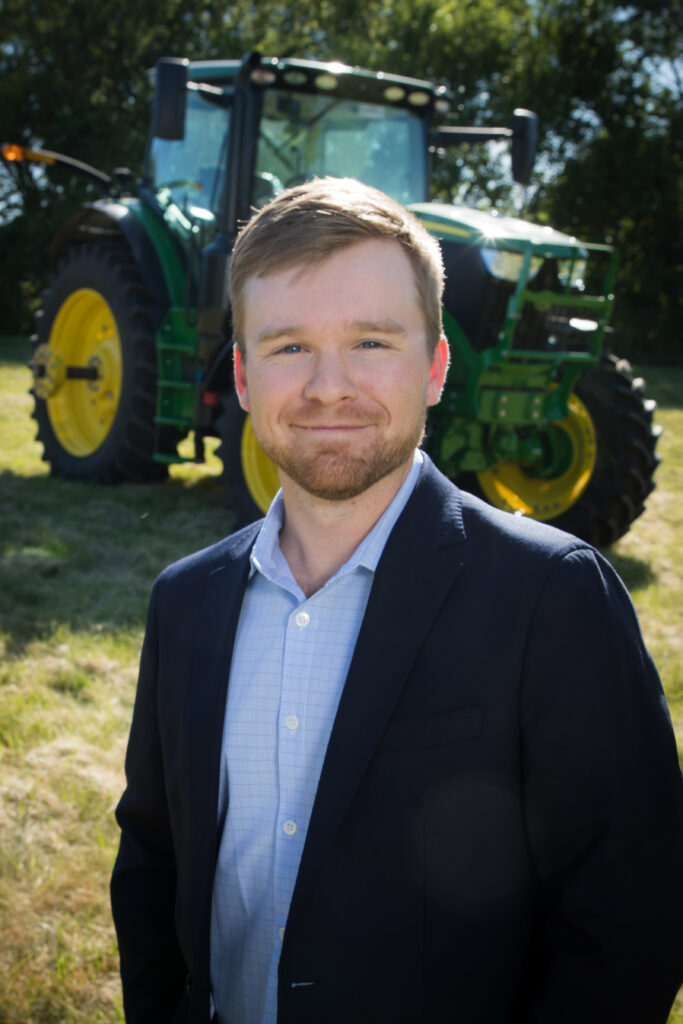A look at the new Smart Industrial Strategy at Des Moines Works factory
Tech takeaway
The John Deere Des Moines Works factory in Ankeny produces four main products: self-propelled sprayers, cotton pickers, tillage equipment and grain drills. In 2020, Deere & Co. launched a new operating model, the Deere Smart Industrial Strategy, focusing on technology investment, aligning products and solutions and providing services to customers for the full life cycle of their products.
Several turning points in the history of the John Deere Des Moines Works factory depict how the facility and its operations have adapted to an evolving agricultural and business landscape.
The first traces back to how the factory, located in Ankeny, was established 75 years ago. The U.S. Department of Defense sold the facility to John Deere in 1947 after it had served as an ammunition production plant during World War II.
Then, between 1948 and 1986, production began on the four products that the factory still manufactures today: cotton pickers (also known as combines), self-propelled sprayers, tillage equipment and grain drills.

But the drop in demand for farm equipment in the 1980s brought uncertainty to the factory floor. Then-factory manager Dick White had to advocate to corporate leaders to keep the facility open, said Rosalind Fox, who has led the Des Moines Works factory since 2016.
Today, the Des Moines Works factory’s more than 1,600 employees are working to stay on the leading edge of technological innovation by way of a new operating model implemented across Deere’s factories.
The Deere Smart Industrial Strategy aims to look ahead at how to provide customers more value through efforts in three focus areas, including investment in developing smart technology solutions to support precision, automation and efficiency.
Fox said the new strategy also points to a fundamental change in identity for the company.
“One hundred and eighty-three years we’ve been known as a manufacturing company, and now we’re stepping out saying, ‘We’re a technology company,’” she said. “That’s a hard transition for many of us who love manufacturing so dearly to absorb and get behind, but it’s absolutely necessary with the change in the world around technology and digitalization.”
Smart Industrial in practice

Implementing the Smart Industrial Strategy at Des Moines Works about two years ago has ramped up the presence of technology both on machines and within the factory.
Joe Farley, senior manufacturing systems engineer, has helped lead the effort to integrate technology into factory operations. Workstations have been outfitted with computer systems and new features to foster efficiency and better communication across the factory’s 18 buildings.
Replacing manual processes with ones that incorporate technology is not a new practice, but Farley said it’s in the data that the technology produces where many new possibilities lie. The “smart” part of smart technology is translating the data into insights that can improve overall operations, he said.
For example, tracking products as they move through the manufacturing process is already a strength of Des Moines Works that data enhances.
“We’re getting a data stream on productivity and efficiency. We can quickly identify if [a product] hasn’t moved, and maybe that means we need to go figure out why it hasn’t moved,” Farley said. “All of that connection coming out of those smart and connected workstations gives us high visibility of those things.”
These upgrades also provide quality control, alerting workers to issues before the product moves to the next stage. Fox said the introduction of camera vision machine learning enables cameras to check whether parts or little details like the decals are in the right place.
“Historically, the only way that we would be able to verify that is somebody walking around with an Excel spreadsheet and checklists to see if it’s visually there,” she said.
Farley said once computer systems are deeply embedded throughout the factory, the next step is harnessing all the data and its possibilities.
“We’re going to have such a huge amount of data and information to process that we’re going to need a huge amount of computing power to take all that information in and then make automated decisions from it,” he said.
From a product point of view, Fox said machines are generating millions of data points on its performance that can help both customers and the Des Moines Works factory improve operations.
“I hope in the future as we’re collecting data on our machines out in the field that we can get that information if there’s something that is not working on the machine,” she said. “Can we drive that information back to an operating station [to see] the day that we assembled it, it was this operator, and we had this type of a component on. Really taking that data and being able to improve our manufacturing processes based on what the customer is experiencing with our machine.”
‘Sense and act’ technology

Deere announced March 2 the launch of its See & Spray technology, the first iteration of “sense and act” technology to enter Deere factories and the agriculture industry, Fox said. Sense and act generally describes artificial intelligence that can interpret its surroundings and is trained to make a specific decision based on that information.
Sprayers with See & Spray technology will be lined with cameras backed by artificial intelligence that can differentiate crops from weeds based on color and only apply chemicals to the weeds.
John Schweitzer, who manages Deere’s sprayer engineering globally, said the technology has reduced herbicide use by 77% on average, reducing farmers’ input costs and negative environmental effects.
Targeted application of insecticide, fungicide and nutrients is also possible with this technology, Schweitzer said. The broader move toward automation means the Des Moines Works factory is studying how to apply sense and act technology to other products.

Jackson Teubert, product manager for Deere’s cotton harvesting division, said the cotton harvesting process has already been mechanized but now can be smarter.
“How do we make the machine smarter? How do we make it functional for a grower to not only just go out and pick cotton but pick it the most efficiently, so reducing losses,” Teubert said. “How do we have the machine react in real time to understand how good of a job it is actually doing, measuring loss, measuring different variables. From that angle, technology is increasingly a bigger part of the harvesting step.”
He said the Smart Industrial Strategy supports different divisions collaborating more closely to understand how technology for one product may be useful to another.
“Those types of ideas … have got more teeth now and they’re not just thrown up as what-ifs,” he said. “We’ve got a lot more collaboration with other product families with other members across the John Deere enterprise, to work together on these projects that are not tied to a single product or single solution. They’re cross-pollinated.”
Moving forward as a technology company, Fox said the Des Moines Works factory will need to think innovatively while keeping “the voice of the customer at the forefront.”
“I think our challenge is not to get in our own way and not be so traditional in our thinking that we can’t make that leap forward into the technology space that we need to be successful,” she said.
